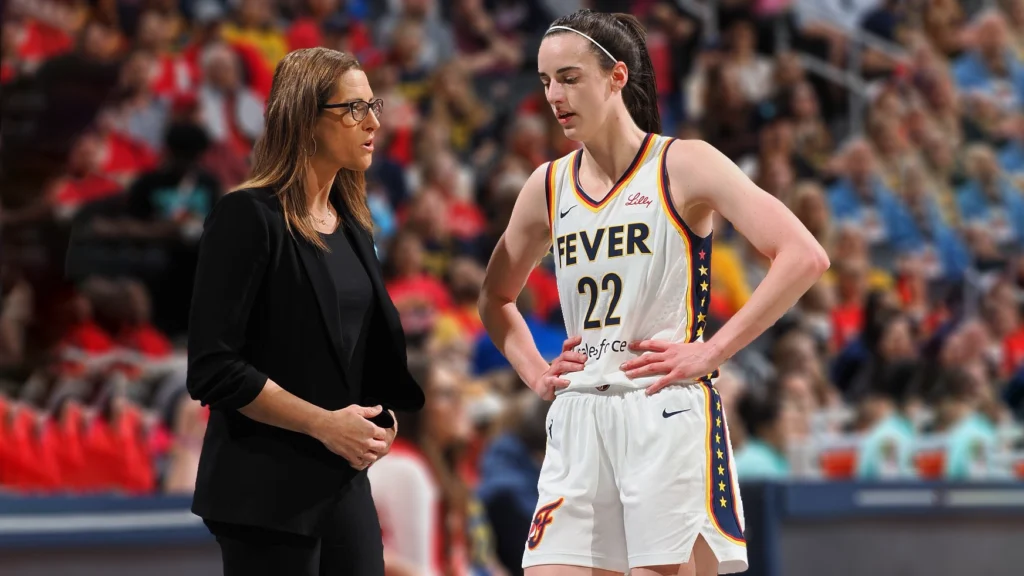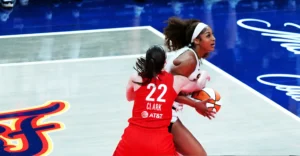
The electrifying presence of Caitlin Clark, the Indiana Fever’s generational guard, has been a driving force in the early WNBA season. However, a significant setback has emerged, casting a shadow over the Fever’s promising start: Caitlin Clark’s quad injury. The team confirmed on Monday that Clark suffered a left quadriceps strain during the May 24th matchup against the New York Liberty, necessitating a minimum two-week absence from the hardwood. This diagnosis sends ripples through the league, impacting not only the Fever’s immediate trajectory but also the burgeoning national interest in women’s basketball.
While the exact moment of the injury remains unconfirmed, reports indicate Clark experienced discomfort in her left leg following the Liberty game, leading to an MRI that revealed the strain. This new ailment is distinct from a similar quad issue she managed during the preseason, which briefly sidelined her. The Indiana Fever coaching staff, led by Stephanie White, has emphasized a cautious, “long-game approach” to Clark’s recovery, prioritizing her long-term health over a rushed return. This strategy is critical for a player of Clark’s caliber, whose dynamic playing style relies heavily on lower-body strength and explosiveness. Rushing back from a quadriceps strain can lead to re-injury and chronic issues, potentially jeopardizing her entire season.
The immediate implications for the Indiana Fever are substantial. Clark, who has been a statistical marvel, averaging impressive points and assists while orchestrating the Fever’s offense, leaves a significant void. Her unparalleled court vision, three-point prowess, and ability to draw defensive attention create opportunities for her teammates that are difficult to replicate. In her absence, veteran guard Sydney Colson is expected to step into the starting lineup, a move that will test the Fever’s depth and adaptability. Players like Kelsey Mitchell and Aliyah Boston will undoubtedly be asked to shoulder a greater offensive load, showcasing their ability to lead the team without their star facilitator. The upcoming schedule, featuring matchups against the Washington Mystics, Connecticut Sun, and Chicago Sky, will provide an early test of the Fever’s resilience and their ability to adjust their offensive schemes without Clark’s magnetic presence.
Beyond the Indiana locker room, Caitlin Clark’s quad injury carries broader implications for the WNBA. Clark’s arrival has ignited unprecedented fan engagement, leading to skyrocketing ticket sales, record viewership numbers, and heightened media attention. The “Caitlin Clark effect” has been undeniable, transforming obscure regular-season games into must-watch events. Her absence, even if temporary, inevitably impacts this momentum. Ticket prices for future Fever games have already seen a noticeable decline, reflecting the market’s dependence on her star power. The league and its broadcast partners will undoubtedly be monitoring her recovery closely, as her return is highly anticipated by a captivated national audience.
From a medical perspective, quadriceps strains, while common in professional sports, require diligent rehabilitation. The typical recovery timeline for such an injury can range from two to four weeks, depending on the severity of the strain. While the Fever has set a two-week minimum for her return, some sports medicine analysts suggest that a full recovery could extend closer to a month to ensure complete healing and prevent recurrence. The rehabilitation protocol will likely involve a combination of rest, ice, compression, elevation (RICE), physical therapy focusing on flexibility and strengthening exercises, and a gradual return to on-court activities. The team’s medical staff will be crucial in guiding Clark through this process, ensuring each step is taken with utmost care.
The resilience of the Indiana Fever and the WNBA’s collective ability to maintain its newfound momentum will be under scrutiny during Caitlin Clark’s quad injury layoff. While no single player defines a league, Clark’s impact has been transformative. Her injury serves as a stark reminder of the physical demands of elite professional sports and the unpredictable nature of athlete health. For now, fans and teammates alike will eagerly await her healthy return, hoping to see the dynamic guard back on the court, pushing the boundaries of women’s basketball once more. The focus remains squarely on a complete recovery, ensuring that when Clark does return, she’s ready to continue her electrifying career at full strength.

